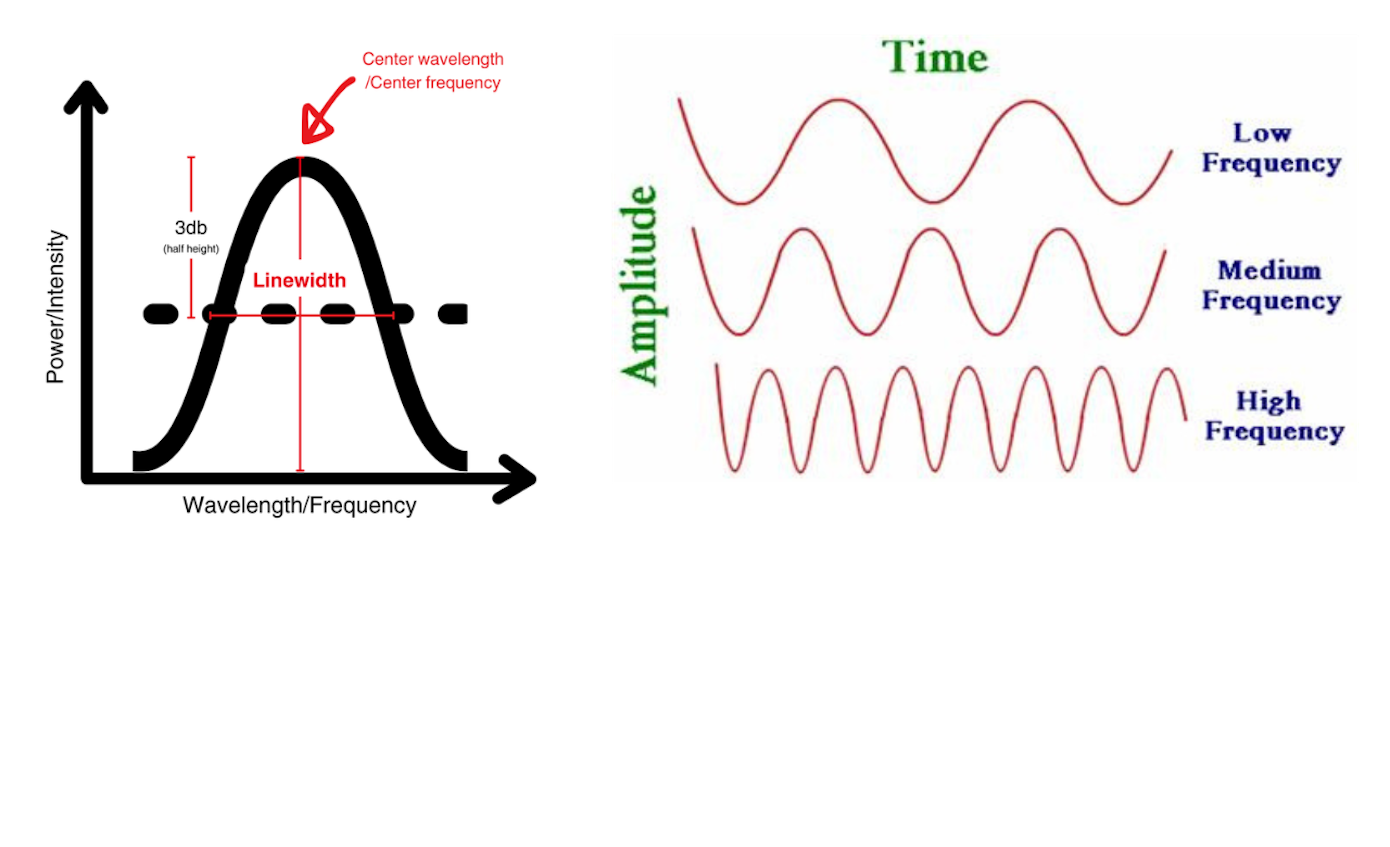The wavelength of light used in fiber optics affects the transmission properties and the design of the fiber.
Light frequency calculator
Click "Save Result" to show results here.
Light frequency calculator
Center wavelength to center frequency
Common bandwidths and transmission windows

Wavelength to frequency formula
Optical bandwidth is typically expressed in either frequency or wavelength intervals. The conversion between the two is non-intuitive. If we assume a reasonably small wavelength interval we can convert to a frequency interval via \[\Delta\nu = {c \over {\lambda^2}} \Delta\lambda \] where \(\lambda\) is the center wavelength and \(\Delta\lambda\) is the wavelength bandwidth.
Linewidth to coherence length formula
Coherence length can be calculated as \[L_{coherence} ={c \over \pi\Delta\nu}\] where \(\Delta\nu \) is the linewidth (in meters). The coherence length of a laser is a measure of the spatial or temporal extent over which the electromagnetic waves emitted by the laser maintain a constant phase relationship. In simpler terms, it describes how "organized" or "ordered" the waves are.
Common Use Cases
Lasers are designed for specific wavelengths, and understanding the relationship between frequency and wavelength is important for creating the desired light properties.
Observing astronomical objects. Different frequencies (or wavelengths) of radio waves can reveal different information about celestial objects, such as stars, galaxies, and other phenomena.
Determining the appropriate antenna length for a given frequency. The wavelength determines the size of the antenna needed to efficiently transmit or receive signals.
• Ultrasound imaging. Different frequencies of ultrasound waves penetrate tissues to varying degrees, providing different types of diagnostic information.
• Detecting and imaging objects. Radar and sonar systems use the relationship between frequency and wavelength to determine the distance and characteristics of objects.
